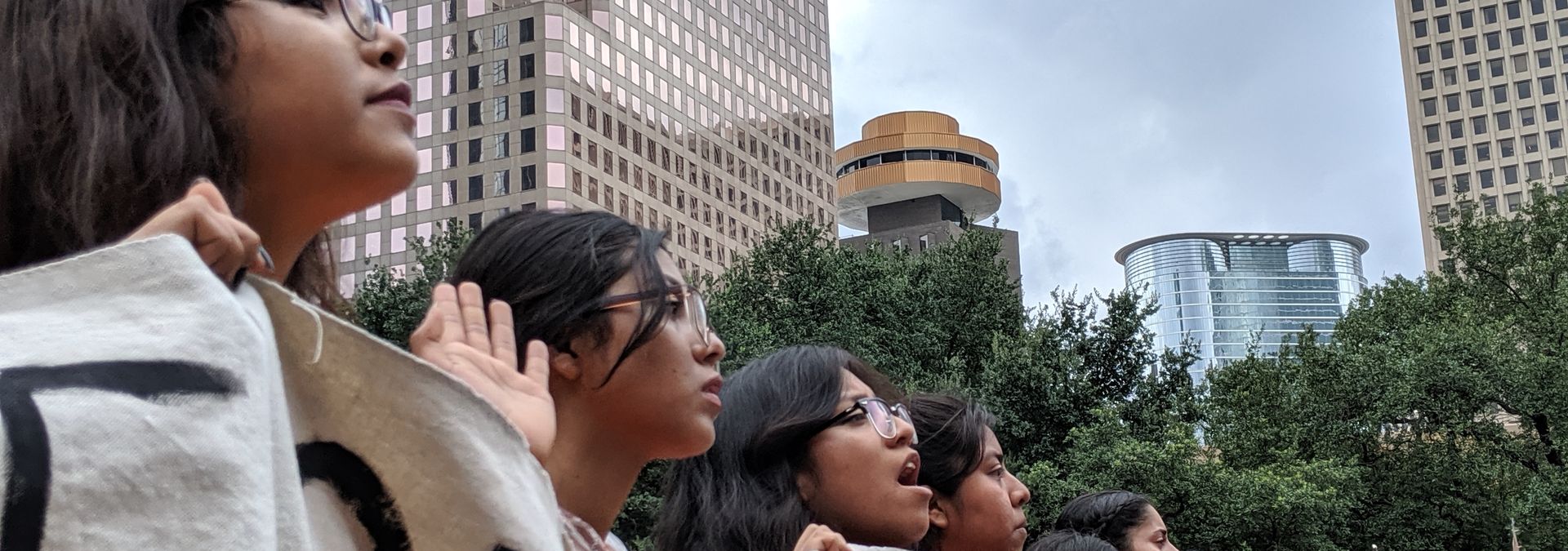
Have Houstonians finally had it with hands-off government?
More Houstonians than ever told researchers with the 2021 Kinder Houston Area Survey that they want government to use its power to plan how land is used and how the city develops.
A “business-friendly environment” encouraged industry to come on down to Houston. You won’t find any zoning here. We won’t get in your way with regulations, either. Here’s a tax break, just because.
Forty years ago, when oil was booming, just a few miles from Exxon Mobil’s downtown skyscraper topped with the lavish, two-story Petroleum Club, Dr. Robert Bullard and a team of Texas Southern University graduate students gathered in his living room to start looking closely at the consequences.
The smell of money turns out to stink like hell. Houston was much more Black and white than it is now, and starkly segregated. Dr. Bullard and his team pulled census data and used markers to map the Black neighborhoods. Then, they used pushpins to locate the polluting dumps, incinerators and other waste facilities. What did they find? “All of Houston’s five city-owned landfills were in Black neighborhoods,” Amal Ahmed writes in the Texas Observer. “Six out of eight city-owned incinerators were in the same neighborhoods, and three out of six privately owned landfills were, too.”
It wasn’t so much land use as land abuse. Now, it’s not just the dumps and incinerators imposing on people’s communities. It’s the cancer-causing ethylene oxide from the Shell Technology Center in west Houston. It’s the soot and the sulfur dioxide from NRG Energy’s W. A. Parish coal-burning power plant in Fort Bend County. It’s the NOx from the dirty diesel equipment in the Ship Channel and Port Houston. It’s the 1,3-butadiene from the TPC Group plant in the East End, with pipes the shape of cigarettes standing across Sims Bayou from Milby Park.
Houston, the city with no limits.
But Houstonians might have had enough of that. During a pandemic that has exposed and exacerbated the inequities long built into Houston’s built environment, more Houstonians than ever told researchers with the 2021 Kinder Houston Area Survey that they want government to use its power to plan how land is used and how the city develops.
Consider these findings:
- More than 85% of respondents said Houston needs better land-use planning to guide development, while only 15% said people and businesses should be free to build wherever they want
- 71% said they were in favor of “prohibiting any additional construction in areas of Houston that have repeatedly flooded.”
- More than 30%, a significant increase from the past, gave negative ratings to their overall health; 25% named public health as the biggest concern facing the city; in past surveys, Black and Hispanic residents have consistently reported worse health outcomes compared to white Houstonians, and that was particularly pronounced this year; both groups were also far more likely than whites or Asians to say they had to put themselves at risk of exposure to the coronavirus because they couldn’t afford to stay home.
These separate findings do not state it explicitly, but they imply the strong connection between health, safety and the built environment. This year’s survey, Dr. Stephen Klineberg says, suggests Houston is a “different city,” but many of the geographical and spatial patterns created by earlier land abuse remain the same — and they are in part responsible for the inequalities the survey laments.
Some of these patterns are rooted in deliberately racist practices. The communities that were redlined in the 1930s by the federal government as being “hazardous” are the ones where the actual hazards like dumps ended up.
Some of the patterns happen because some people’s properties have never been appropriately valued and fully protected by government from polluting industries.
To see them, look at this photograph shot by the Houston Chronicle’s Elizabeth Conley. In it, two boys play basketball on a residential street with no sidewalks that dead-ends at the chain-link fence of Marathon Petroleum’s Galveston Bay refinery — one of 13 facilities in the U.S. releasing too much cancer-causing benzene, a new Environmental Integrity Project report finds. Marathon’s facility released even more benzene this year than last, exceeding the EPA’s “action levels” — but the corporation, apparently, didn't take any.
More Houstonians than ever want action to be taken. The Marathon Petroleums and the Exxon Mobils and other huge corporations are the ones releasing harmful air pollution illegally in Texas nearly every single day, and it’s people who are poor and Black and Hispanic who are most likely to be exposed to it. This is where the consequences of the patterns of land use and development are most severe: Children who live within two miles of the Ship Channel are 56 percent more likely to develop a specific kind of leukemia than children who live in Montrose or the Heights or West University Place.
This is environmental injustice — the name given later to the patterns exposed by Dr. Bullard and his team. The way land has been used and abused and development has taken place for the sake of friendliness to business has been downright hostile to Houstonians. They have been forced to live — through no fault of their own, the survey reminds us — with an overabundance of detrimental exposure to pollution and a lack of access to resources. It has led to inequity. Houston does not have enough basic infrastructure for flood protection to go around. It does not have enough disaster recovery dollars. It does not have enough parks. It does not have enough grocery stores. It does not have enough high-quality child care. It does not have enough affordable housing.
Old stories about what works in Houston, old slogans that explained away the consequences, old structures that produced hazardous, inequitable environments, are being rebuked. Houstonians couldn’t be clearer. The way the city has developed in the last 40 years has made too many of them feel vulnerable, exposed, worried about their health and scraping by from paycheck to paycheck.
“Far more respondents than ever before,” the survey says, after 40 years, “assert that government has a responsibility to help reduce inequalities and, more generally, to do more to solve the country’s problems.”
Last year, after six chemical disasters happened in about 11 months, Houstonians told the Kinder Institute for Urban Research that they wanted more to be done to control air pollution. This year, they are saying they want help. They want access to opportunities, and they want more leaders who will do what it takes to alleviate their burdens. Leaders should read this year’s survey as the beginning of a new story about what Houston might be — and for whom it must be better.
West is a writer with One Breath Partnership. You can follow him on Twitter @allynwest.
STAY UP TO DATE
The quality of our newsletter is considered satisfactory and poses little or no risk.
SUBSCRIBE

